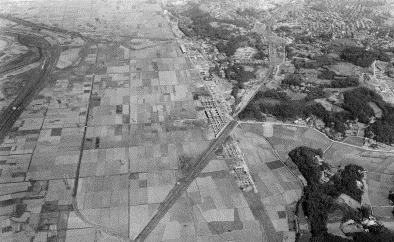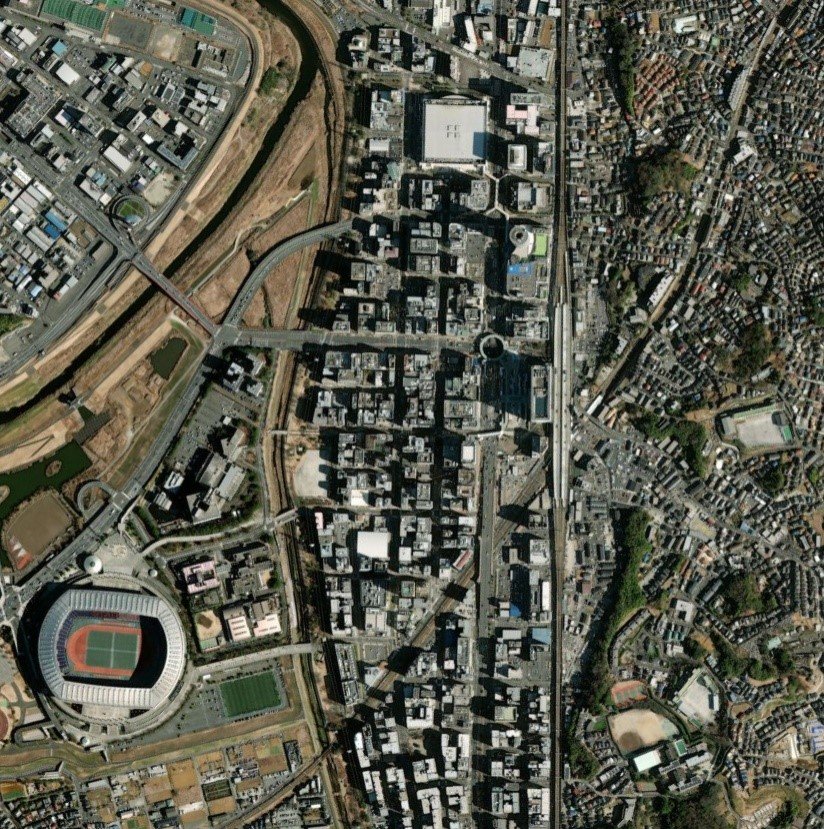Shinkansen is not only convenient in its own, but also has great strengths in connectivity due to the dense conventional train and subway networks that connect to each stop of Shinkansen. Shinkansen is more than just a means of transportation; it is a means of bringing about social transformation. One example of the benefits of the introduction of HSR is the revitalization of the regions along the line, and in order to maximize the benefits, it is important to enhance access to HSR. In Japan, further improvements in connectivity are still underway. This article will introduce the development case of Shin-Yokohama Station on the Tokaido Shinkansen Line.
Shin-Yokohama Station is located at the intersection of the Tokaido Shinkansen and the conventional Yokohama Line, and was opened in 1964. At the time of opening, the area around Shin-Yokohama Station was a rural area, and the Yokohama Line was a single-track operation with few trains. When the Shinkansen line first opened, only the Shinkansen “Kodama” trains stopping at each station stopped at Shin-Yokohama Station, but the number of express “Hikari” trains gradually increased to stop. Later, the Yokohama Line became double-tracked, increasing the number of trains, and a Yokohama Municipal Subway station was opened, making each line stopping at Shin-Yokohama Station more connective and convenient. The number of passengers per day has increased. Compared to the number of passengers in 1964 to nowadays, approximately 2,200 to 65,000 for the Shinkansen and approximately 2,700 to 130,000 for the conventional lines. Development around the station has also been active, and public land prices have increased from an average of 303,000 yen in 1994 to 856,400 yen in 2022, 2.8 times increase. The effect is clear when one considers that public land prices across Japan have declined by two-thirds over the same term.
In addition, the Sotetsu-Tokyu Direct Line opened on March 18, 2023. The lines of two private railway companies, Sotetsu and Tokyu, will be directly connected by a new short line via Shin-Yokohama Station. As a result, 14 lines of 7 companies and 14 stations, totaling about 250km in length, are now connected from central Kanagawa Prefecture to Tokyo and Saitama Prefecture without having to transfer trains. This means that the Tokaido Shinkansen can be accessed without transfers not only from Kanagawa Prefecture but also from central Tokyo, including Shibuya and Meguro, etc. This has increased the options for access to the Tokaido Shinkansen from areas along the line and has also improved convenience to Chukyo and Kansai areas via the Shinkansen. Furthermore, in conjunction with the opening of the Sotetsu-Tokyu Direct Line, the Tokaido Shinkansen will offer trains that depart from Shin-Yokohama Station in the early morning hours, a first for the "Nozomi", the fastest train service. It is hoped that the opening of the Sotetsu-Tokyu Direct Line will create a new flow of people and lead to the development of local communities along the line.
We hope that rail networks will continue to be developed around the world to create synergies among each other in order for HSR to reach its true potential.
- https://www.sotetsu.co.jp/future/into_tokyo/
https://www.tokyu.co.jp/railway/service/activity/network/chokutsusen/
https://www.mlit.go.jp/totikensangyo/totikensangyo_fr4_000043.html
https://www.city.yokohama.lg.jp/city-info/yokohamashi/tokei-chosa/portal/jinko/choki.html

Shin-Yokohama Station as of 1993

Shin-Yokohama Station as of 2023